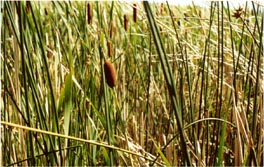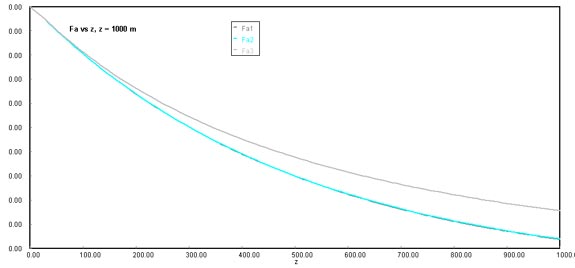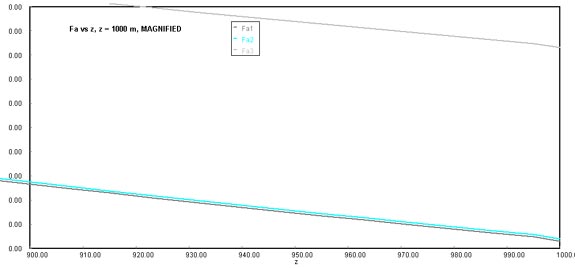Wetlands
Web Module
Scott J. Conaway
Alejandra De Obeso
Dr. Nihat M. Gürmen
Prof. H. Scott Fogler
 Challenge - Solution
Challenge - Solution
![]()
![]()
![]()
1) Explore the effects of atrazine degradation if the weather conditions changed over the wetlands. What would occur if the ambient air was saturated and there could be no evaporation? What if it rained, making the evaporation rate a negative value? Choose appropiate values for Q (surface area evaporation) in these two scenarios, and plot them in comparison with the original case using Polymath. You should observe differences on the way the weather affects the molar flow of atrazine, FA, as the waste water travels a distance of z = 1000 m.
If the ambient air was saturated, and there could be no evaporation, this would definitely imply that Q2 = 0 kmol water/hr*m2. If it rained, the evaporation rate should be negative, then Q would be assumed (as an example) as Q3 = -1E-03 kmol water/hr*m2. Changing the original equations in Polymath in order to add a Q1, Q2 and Q3, would lead to the following programming expressions:
Download the original Polymath file of this problem, by clicking here:
PFR_model_weather.pol
Graphing FA against the change in distance up to z = 1000 m, we would observe the following behavior from the three different weather conditions:
FA vs z = 1000 m, varying Q
Zooming in, (x = 900 to 1000), (y = 2.6E-05 to 5.25E-05)As you may note from the images above, the grey line (top) represents FA during rainfall; the cyan line (middle) represents FA when there is no evaporation; and the violet line (bottom) represents FA during original conditions, when evaporation occurs. Notice that there is barely no difference between having or not having evaporation, since both lines have nearly the same FA at the end.
The final values for FA at z = 1000 m were (for this particular case):
Note that these values will be different depending on the magnitude of Q that you select to represent rainfall.

